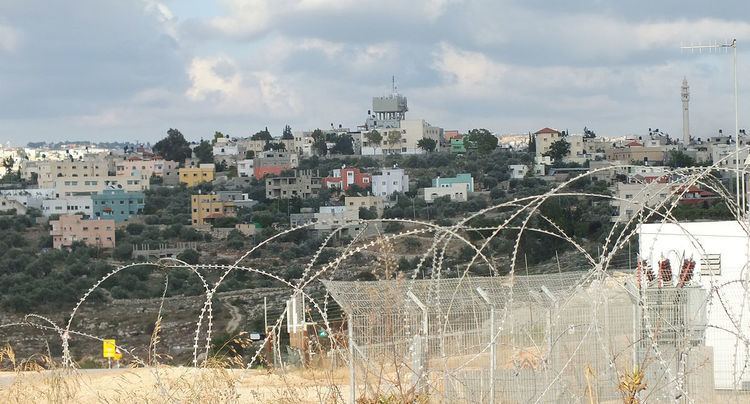Palestine grid 155/168 Name meaning "Gravelly soil" | ||
 | ||
Weather 17°C, Wind W at 23 km/h, 63% Humidity | ||
Mas-ha (Arabic: مسحة) is a Palestinian village located in the Salfit Governorate in the northern West Bank, 37 kilometers southwest of Nablus. According to the Palestinian Central Bureau of Statistics, it had a population of 2,003 in 2007.
Contents
Map of Mas'ha
History
Potsherds from the Byzantine, Byzantine/Umayyad, Crusader/Ayyubid and Mamluk era have been found.
Ottoman era
Potsherds from the early Ottoman era have also been found. Masha appeared in 1596 Ottoman tax registers as being in the Nahiya of Jabal Qubal of the Liwa of Nablus. It had a population of five households, all Muslim, and paid taxes on wheat, barley, summercrops, olive trees, occasional revenues, goats and beehives, and a press for olives or grapes.
French explorer Victor Guérin passed by the village in 1870, and estimated it as having about 300-350 inhabitants, and fig-tree lined borders. In 1882 the Palestine Exploration Fund's Survey of Western Palestine (SWP) described Mes-ha as "a good-sized village, with a high central house, but partly ruinous. It is supplied by cisterns, and the houses are of stone."
British Mandate era
In a census conducted in 1922 by the British Mandate authorities, Mas-ha (called: Masha) had a population of 80, all Muslims, while in the 1931 census it had 20 occupied houses and a population of 87, again all Muslim.
In 1945 the population was 110, all Muslim while the total land area was 8,263 dunams, according to an official land and population survey. Of this, 1,612 were allocated for plantations and irrigable land, 2,482 for cereals, while 18 dunams were classified as built-up areas.
1948-1967
In the wake of the 1948 Arab–Israeli War, and after the 1949 Armistice Agreements, Mas-ha came under Jordanian rule.
Post-1967
After the Six-Day War in 1967, Mas-ha has been under Israeli occupation.
